Pine (Pinus) is a type genus of conifers, trees or shrubs, which is a representative of the Pine family. This genus unites approximately 120 species. In nature, such plants can be found throughout the entire Northern Hemisphere (from the equator to the arctic). In regions with temperate and subarctic climates, pines form extensive forests in both mountainous areas and plains. And in regions with a subtropical and tropical climate, such a culture can be found in nature in most cases in the mountains. There are 3 different versions of how the name of this genus came about:
- from the Celtic word "pin", which translates as "rock, mountain";
- from the Greek word pinos, which was mentioned by Theophrastus;
- from the Latin word "picis, pix", translated as "resin".
There is an ancient Greek myth, which says that the pines descended from the dawn nymph Pitis, the god of the north wind Boreas was very jealous of her, and therefore he decided to turn her into a tree. According to the Chinese, such a coniferous tree protects the house from harm, and also brings longevity and happiness. In this regard, this culture is recommended to be planted near the house. Today, pine is very popular with gardeners of all countries, and therefore breeders are actively working to obtain new unusual varieties and hybrids.
Content
Pine features
The pine is a monoecious evergreen tree. In young plants, the crown has a pyramidal shape, with age it changes to a spherical or umbrella-shaped one. This genus is represented by shrubs, trees or creeping bushes. The height of this plant varies from 2 to 50 meters. A developed root system is of an anchor type or a pivot. The trunk is covered with a brown-red deeply fractured bark, and the branches are thinly flaky light yellow or pale red.Such trees are distinguished by whorled branching, and their shoots are divided into 2 types: elongated (auxiblasts) and shortened (brachyblasts). The needles are placed only on shortened shoots. Shoots are also divided into 3 types according to the number of needles on them: two-coniferous (seaside pine and Scots pine), five-coniferous (Japanese white pine and Siberian pine) and three-coniferous (Bunge pine). The length of the needles varies from 50 to 90 mm, they sit in bundles of 2–5 pieces, while they are surrounded by a membranous sheath. On long shoots are scaly leaves of a brown color. In some cases, due to mechanical damage, rosette shoots are formed on the tree: they are shortened and have bundles of short and relatively wide needles.
At the base of young branches, male strobili form ears. Female strobili are symmetrical drooping cones of an ovoid-conical or oblong shape, they are placed in the upper part of the tree. When the seeds are fully ripe, cones fall off. The cones include woody or leathery fruit scales, which are tiled. At the tips of the scales there are thickenings in the form of a faceted shield. As a rule, the seeds of such a culture are winged, however, there are pine species with wingless seeds. Pollination of this plant occurs with the help of the wind. The seeds remain viable for four years. Pine trees are long-lived. In nature, there are specimens that are several thousand years old.
Planting pine trees in open ground
What time to plant
Three to five year old seedlings with a closed root system are ideal for planting in open soil. If the roots of the seedling are in the open air, then after 10-15 minutes. they will die. It is recommended to buy seedlings exclusively in specialized nurseries that are located in your region.
Before planting, the root system of the plant is immersed in water, where it should stay for 3 hours, while it does not need to be removed from the container. Pine planting in open soil is carried out from the last days of April to the first - May, or from the end of August to the second half of September.
Landing rules
The depth of the planting pit should be about 100 cm. If the soil in the area is heavy, then at the bottom of the pit, a twenty-centimeter thick drainage layer should be made of broken brick or expanded clay, then it is poured with sand. The soil mixture for filling the pit should be prepared in advance. To do this, you need to combine the fertile topsoil with clay or sand and with turf in a ratio of 2: 1: 2. You need to pour 100 grams of Kemira-wagon or 50 grams of Nitrofoski into the finished soil mixture, everything mixes well. If the soil is acidic, then 200 to 300 grams of slaked lime must still be added to it. Part of the soil mixture must be poured into the pit, after which a seedling is installed in it, which must be very carefully pulled out of the container, while trying to keep the earthen lump intact. Then the remaining voids must be filled with earth mixture, they do this gradually, while the soil mixture must be slightly compacted.
When the pine tree is planted, an earthen dump is made around it, after which 20 liters of water are poured into the trunk circle. After the liquid has completely absorbed and the soil has settled, the root collar of the seedling should be flush with the surface of the site. It should be noted that when planting a large size, the root collar should rise 10 centimeters above the surface of the site. After some time, it will drop to the level of the ground surface. When planting several seedlings, a distance of at least 4 meters must be maintained between them, however, an interval of only 150 cm between trees of low-growing varieties will be sufficient.
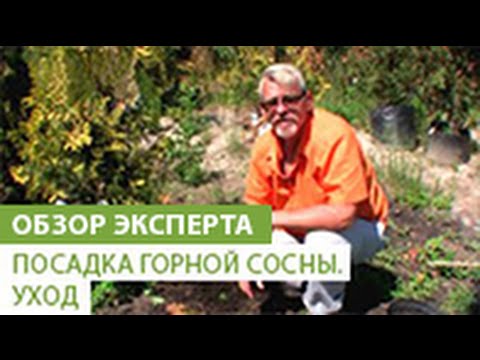

Watch this video on YouTube
Pine tree care in the garden
Pine is highly resistant to drought, so it does not need watering, since it has enough natural precipitation.However, plants planted in open ground last or this year need autumn water recharge irrigation, it is carried out when leaf fall ends. The fact is that wet soil does not freeze very much during severe frosts. You also need to remember that if water stagnates in the soil, this can cause the death of the tree. The type of Rumelian pine is less resistant to drought, during the season it will need 2 or 3 waterings, while 1.5–2 buckets of water should be poured under one tree at a time.
During the first two years, young trees planted in open ground need feeding. It is carried out once a year, while a solution of complex mineral fertilizer is introduced into the trunk circle (40 grams are taken per 1 square meter of the plot). In subsequent years, organic matter will accumulate in the coniferous litter, which will be enough for the pine.
It is not necessary to prune such a tree, however, so that the crown is more lush and the growth of the pine is not so fast, experts advise to break off the light (young) branches by 1/3 of the length with your hands.
Transfer
It is recommended to transplant coniferous crops in the spring, or rather, from the second half of April to the first days of May. This is because conifers, in comparison with deciduous ones, take root much worse, since the development of their roots is relatively slow, and therefore pine trees need more time and a longer warm period to adapt to a new place.
If you want to dig up a young pine tree in the forest and plant it in the garden, then in this case you will need to take into account several rules. To begin with, the plant will need to be dug along the projection of the crown perimeter, while gradually exposing the pine root system, trying not to injure it. The circular trench should have a depth of at least 0.6 m, and its width should be from 0.3 to 0.4 m. After that, the pine tree is carefully pulled out of the soil along with an earthen lump and as soon as possible delivered to the new landing site. Remember that it is very important that the roots of the plant are constantly in the ground during transportation and planting. The dug pine tree must be placed in a pre-prepared pit, at the bottom of which a drainage layer has already been laid, as well as 500 grams of manure, while on top you need to fill everything with a layer of forest soil, which must be combined with coniferous litter and fertilizers. When preparing the pit, it should be borne in mind that its size should be 1.5 times the size of the pine root system together with a lump of earth. The remaining voids in the pit must be covered with forest soil. The planted tree needs abundant watering. The first 15–20 days it will need to be watered often and abundantly (at least 2 times in 7 days).


Watch this video on YouTube
Pine diseases and pests
This culture much more often suffers not from pests or diseases, but from non-compliance with the rules of agricultural technology and improper care. It happens that gardeners complain that a normally established pine tree suddenly begins to turn yellow, or a seedling planted last season suddenly dies in the spring. This happens, as a rule, due to the fact that the plant was not planted on time or incorrectly, and it could also suffer due to non-compliance with the rules of care.
Such trees are very often affected by fungal diseases, which develop, as a rule, due to overly dense planting, lack of light, or stagnant water in the soil.
Rust
Rust - This fungal disease affects this plant most often. In the affected specimen, orange bubbles appear on the lower part of the crown, inside which there are spores. For the purpose of prevention, this tree is not recommended to be grown near gooseberries or currants, and it is also necessary to timely carry out preventive spraying of the plant with products containing copper.
Pine wither
Pine vertune - oblong swellings of a yellow-golden hue are formed on the affected young shoots. Over time, the curvature of the shoots in the shape of the letter S is observed, and wounds form on their surface, in which resin accumulates. Pine is treated with fungicides, as well as microfertilizers and immunostimulants. Needles that have fallen from infected plants must be collected and destroyed.
Rust cancer (resin cancer)
Rust cancer (resin cancer) - this disease is a great danger for pine, because the infected plant, as a rule, dies. A diseased tree suddenly has cracks in the bark, in which bubbles of yellow-orange color are formed. If the plant has been infected very recently, then you can try to cure it. To do this, the wound on the bark of the trunk should be thoroughly cleaned to a healthy tissue, then the wood is treated with a solution of copper sulfate (3-5%), and then a protective composition is applied to the wound, so you can use a garden var mixed with fungicide or Ranet paste. It is recommended to cut diseased branches, and the cut sites are disinfected in the same way as the wounds on the trunk. Plant residues must be destroyed.
Umbrella disease (scleroderriosis)
Umbrella disease (scleroderriosis) - in the affected plant, the apical bud on the shoots dies, then the needles die, and the disease spreads throughout the branch. The disease develops most intensively in warm autumn or during wet seasons, and mountain and cedar pines are most susceptible to it. In order for the infection not to spread throughout the tree, timely sanitary pruning should be carried out throughout the season, while the dead shoots are cut to a healthy bud.
Snow Shute
Snow shute - this disease affects exclusively young trees that are less than 8 years old. Symptoms of the disease appear in the spring time immediately after the snow cover melts. In the affected pine trees, the needles are painted in a brown-red hue, black dots of fungal spores form on their surface, and then a bloom of white color. If the damage is massive, then this can cause the death of the cuttings or seedlings. The causative agents of the infection are found in the needles that have fallen from the affected pine trees, so it is so important to collect and destroy them in time. The seedlings must be subjected to a double treatment with a product containing copper, which is carried out in May, and then from the middle to the end of the summer period.
Bark necrosis
Bark necrosis - the affected plant exhibits yellowing, drying out and death of branches and bark. The development of this disease is usually observed on trees that have weakened due to frost, drought, or mechanical damage to the bark. Infected plants need at least 3 treatments per season (in spring, in the first summer weeks and in autumn) with fungicidal preparations. Before proceeding with the treatment, it is necessary to remove pathogenic formations from the surface of the bark; for this, use a tampon moistened with a fungicide solution, and you also need to cut off dead shoots and branches to a living bud.
Pests that can settle on the bark are conventionally divided into 4 groups:
- sucking: aphids, hermes, conifers, pine scale insects, pine bedbugs and spider mites;
- pine needles: red pine sawflies, pine silkworms, shoots, pine moth caterpillars and pine mining moth;
- cone pests: cone moths, cone resins;
- stem and subcortex pests: large and small bark beetles, barbel beetles, golden beetles, elephants and pinpoint smoles.
In order to protect the plant from these pests, it is necessary to follow all the rules of agricultural technology of this crop, properly care for the trees (especially young ones), and also systematically carry out preventive spraying of pine with acaricides and insecticides.


Watch this video on YouTube
Reproduction of pine
Pines can be propagated by grafting, cuttings and seeds.As a rule, pine vegetative propagation methods are reliable and quicker results. But most often such a tree is propagated by seeds.
Growing pine from seeds
Well-ripened fresh seeds are used for sowing. Collecting cones should be carried out in the last days of October or in the first - November, during this period the seeds in them will already be fully ripe and suitable for sowing. It should be noted that cones must be plucked from the pine, and not collected from the ground. They will need to be thoroughly dried, for this they are laid out in the room on a sheet of paper or cloth, while placing them next to the heater. Seeds can be easily extracted from well-dried buds. For storage, they are poured into tightly closed glass jars, which are removed in a cool place. 8-12 weeks before sowing, the seeds must be sorted out, after which they are poured into a container filled with water for a while. It is recommended to collect and discard the floating seeds. The same seeds that have drowned must be stratified. To begin with them for 30 minutes. placed in a solution of potassium manganese, which should be painted in a faint pink color. Then they are washed and kept in clean water for 24 hours, then they are combined with moistened sand. The mixture is poured into a nylon stocking, which is removed on the refrigerator shelf for at least 4 weeks.
Sowing seeds is carried out in the second decade of April. The substrate should be light, but not necessarily nutrient-dense. So, for sowing, you can use river sand, which needs to be calcined for a third of an hour in an oven heated to 200 degrees. The container is first filled with sand, then a two-centimeter layer of sawdust is poured on top, on the surface of which the seeds should be evenly distributed, while the pointed tip should be directed downward. Each seed needs to be slightly pressed into the substrate, after which its surface is covered with a layer of fallen needles, the thickness of which should be 10-15 mm. The crops are watered abundantly with a spray bottle, after which the container is covered with a film on top. The first seedlings, as a rule, are shown already in April, but may be a little later. Crops need systematic airing and watering, and condensate accumulated on the film must also be removed in a timely manner.
After the first seedlings appear, the container must be transferred to a warm and well-lit place, which must have reliable protection from drafts. During the formation of the second pair of needles in the plants, they will need to be transplanted into real soil mixture for pine trees. Planting seedlings in open soil is carried out after 2-3 years in the spring, while a distance of 0.3-0.5 m should be kept between them. When planting, you need to be extremely careful so that the roots of the plant are not exposed and not injured, but you also need to try not to shake off the microsea from them, on which the normal growth and development of the tree depends. The root of the seedling must be carefully trimmed, after which it is immersed in a chatter box consisting of humus and garden soil (1: 2), so much water is added to obtain the consistency of thick sour cream. Then the pines are planted in the holes, which should be prepared in advance. Watering of seedlings in a school garden is carried out 1 time in 7 days. When the trees are watered, the surface of the soil should be loosened around them, and all the weeds should be pulled out. And in the second year in the spring, before the sap flow begins, the pines should be fed by adding 25 grams of superphosphate, 0.5 kilograms of rotted manure and 10 grams of potassium nitrate per 1 square meter of the garden to the soil. Fertilizers must be sealed to a depth of ten centimeters. 4 years after transplanting into a school, the seedlings can be planted in a permanent place, they do this in spring or early autumn.
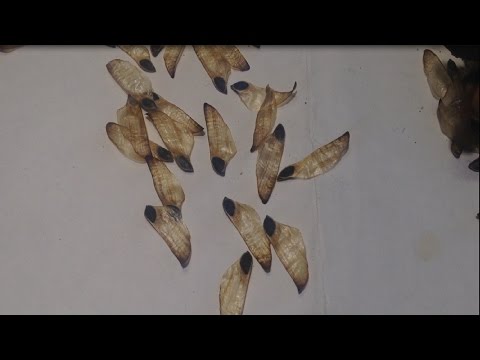

Watch this video on YouTube
Reproduction of pine by cuttings
Cutting of this culture is recommended in the autumn.Lignified cuttings are cut, the length of which can vary from 80 to 120 mm, they are taken with a heel (with a piece of wood from the branch on which the cutting was located). To prepare them, you should choose a cloudy day. Cuttings are cut from the apical lateral shoots of the middle part of the crown, which are facing north. Cuttings should not be cut off, but with a strong, quick movement down and to the side, tear off with a piece of wood and bark (heel).
Before planting the cuttings, their heels will need a little deburring and needling. Then the cuttings should be kept for 4–6 hours in a 2% solution of Fundazol, potassium manganese (dark pink) or Kaptan. And shortly before disembarking, the heel and the lower edge of the segment must be treated with a solution of Epin, Kornevin or Heteroauxin. Cuttings are planted in a soil mixture, which includes humus, leafy earth and sand, taken in equal parts. They are planted at an angle, and then covered with a transparent cap on top to create the greenhouse conditions necessary for rooting. Every day the cuttings should be ventilated, and condensation should be removed from the hood. For the winter, the container with cuttings is recommended to be removed to the basement, and in the spring time it should be transferred to the street. Cuttings will take root after 1.5–4.5 months, while young shoots and roots will grow at the same time. With the onset of next spring in the month of May, cuttings need to be watered with Kornevin's or Epin's solution. Planting pines in open soil can be done after another 1 year.
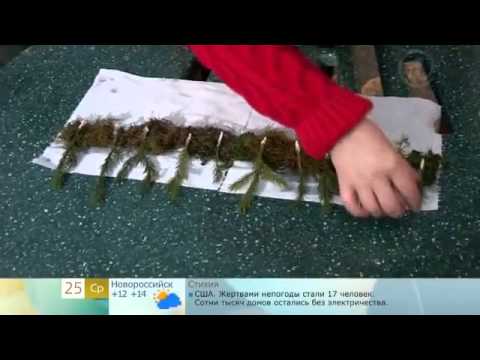

Watch this video on YouTube
Reproduction of pine by grafting
As a rule, only gardeners who have experience in this matter are propagated by grafting a pine tree, but if desired, a beginner can also do this. The grafting in the butt has a very important advantage, namely, thanks to this method, the scion stalk is guaranteed to retain all the varietal characteristics of the parent plant.
As a stock, you can take a plant whose age is from four to five years. And the scion is cut with growth, the age of which is 1–3 years. All the needles must be cut off from the cutting; they should remain only near the bud, which is in the upper part. At the rootstock, you need to cut off all lateral buds and cut off long shoots.
Vaccination should be done in spring, as soon as sap flow begins, or in the middle of the summer period. In the spring, the pine is grafted on last year's shoot, and in the summer - on the shoot of the current season.
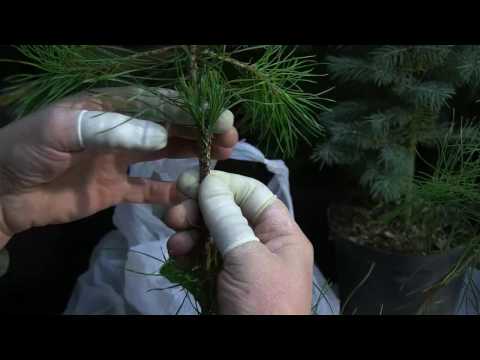

Watch this video on YouTube
Wintering pine on the site
Autumn care rules
All types of pine, with the exception of the Thunberg pine, are frost-resistant. After it gets colder outside, all processes slow down in the plant, but they do not stop completely. In this regard, pines need preparation for wintering. Approximately in the last days of November, before severe frosts begin, it will be necessary to carry out water charging. If the height of the tree is less than 100 cm, then 20 liters of water need to be poured under it, for higher specimens the consumption rate increases to 30-50 liters. Before watering along the perimeter of the border of the near-trunk circle, it is necessary to make an earthen dump, this will prevent the spread of liquid over the site. In one-year-old and two-year-old seedlings, the root system is still underdeveloped, therefore, moisture-replenishing watering in autumn is especially important for them. It is also simply necessary for plants that have undergone formative pruning in the current season, and for varieties and forms with low frost resistance.
With the onset of August, it is forbidden to apply fertilizers containing nitrogen to the soil, because it helps to stimulate the growth of green mass. And in autumn it is necessary for the already existing shoots to grow and ripen, otherwise they will die in winter. In order for them to become lignified faster, in September they arrange feeding with phosphorus-potassium fertilizer, this will also help to make the plant's root system stronger.
When preparing for wintering young specimens, you must remember to cover the surface of the trunk circle with a layer of mulch. Experts advise mulching the soil with tree bark, which needs to be crushed. The fact is that such mulch allows air to pass through, which is necessary for the root system, and during a thaw, evaporation also does not linger in the soil, this allows you to prevent the root collar or plant roots from becoming rotten, which quite often happens if the soil is covered with sawdust.
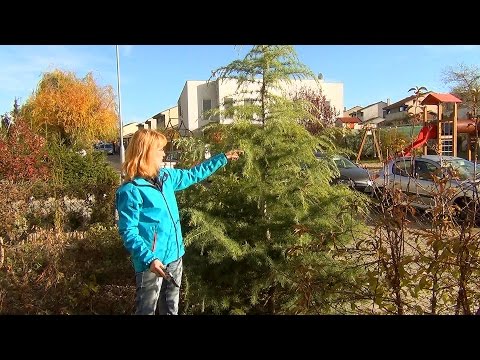

Watch this video on YouTube
Wintering
If there is a heavy snowfall in winter, then due to the heavy wet snow, injury to thin branches may occur, and fractures may also appear on the skeletal branches. It is forbidden to pull the pine by the branches and shake it in winter, because during this period it is very fragile, and even from a little effort, cracks may appear on the branches. To remove snow from branches that you can reach, you can use a brush or a broom with a long handle, while moving from the tip of the branch to the trunk. To remove snow from branches growing relatively high, you need to use a long stick or board, one of its ends must be wrapped with a cloth, then the necessary branch is attached to it, which should be swung up and down. Faults can also be formed due to the ice crust that appears on the plant during a thaw or when the temperature is above zero in the daytime and minus at night. To prevent injury to the branches, it is necessary to put supports under them, as is done with fruit crops during the formation of a large number of fruits.
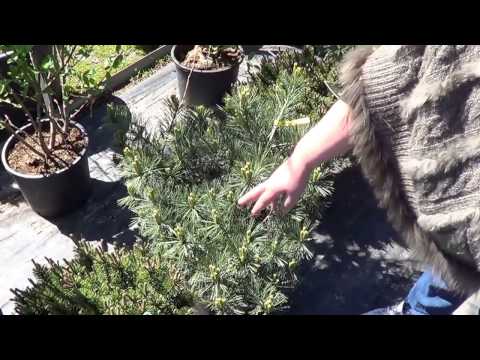

Watch this video on YouTube
Types and varieties of pines
There are a very large number of species and varieties of pine, which are difficult to understand not only for a beginner, but also for an experienced gardener, especially when you consider that new hybrids and varieties are born every year. Below will be described those of them that are most popular with gardeners.
Bristol pine (Pinus aristata), or bristlecone pine
This American species can be found in nature in New Mexico, Colorado, Arizona, dry areas of Utah, Nevada and California. The height of this bushy tree is about 15 meters, while in Europe it does not grow so high. Less often, this species is represented by undersized shrubs, while they are young, their bark is smooth and green in color, with age it becomes scaly. Short branches, stiff and raised. The five-needle type, dark green needles are very dense, their length varies from 20 to 40 mm. For the first time, cones appear when the tree is 20 years old, they have a cylindrical-ovoid shape and a length of 40–90 mm. Trees of this species need a lot of light, they are undemanding to growing conditions, they are resistant to drought, but they react negatively to the smoky air in the city. Garden forms:
- Bashful - the shape of the crown is round;
- Joz Best - the shape of the crown is conical;
- Rezak Doll - loose conical crown;
- Sherwood Compact - a small tree has a dense conical crown.
Flexible pine (Pinus flexilis)
The homeland of this species is North America. The height of such a tree is about 26 meters. In a young plant, the crown has a narrow conical shape, over time it becomes spherical. At first, the dark brown bark is thin and smooth, and then becomes finely scaly and rough. Slightly curved branches in adult specimens hang at an acute angle to the trunk. Furrowed young shoots are painted in a pale brown-red color, they can be naked or there are curly blond hairs on their surface. The length of the needles, collected in bunches of five, is 30–70 mm; they are rigid, triangular, curved and colored dark green. On a plant needles stay from 5 to 6 years.The length of the hanging glossy cones is about 15 centimeters, their shape is ovoid-cylindrical, and the color is light yellow or pale brown. In Europe, the species has been cultivated since 1861. Its decorative forms:
- Glenmore... In this form, the needles are longer than the main species, and they are colored bluish-gray.
- Nana... It is a shrub dwarf form. The needles reach 30 mm in length.
- Pendula... The height of such a tree does not exceed 200 cm, the branches are hanging.
- Tiny Temple... This form is very short. The length of the needles is 60–70 mm, their front surface is dark green, and the back surface is bluish-gray.
European pine (Pinus cembra), or European cedar
Under natural conditions, this species can be found in central Europe. The height of such a tree varies from 10 to 15 meters. The shoots are colored rusty red or brown. In needles, one of the sides is green, and the second is light blue or gray-gray, and on its surface there are stomatal stripes. The length of the spherical-ovate cones is 50–80 mm, and their width is 40–60 mm. This species is frost-resistant, durable and shade-loving. There are decorative forms:
- univalent - in such a dwarf bush, the needles are collected in bunches of five;
- green - the needles are colored deep green;
- golden - glossy needles are yellow in color;
- motley - the needles are variegated-golden;
- Aureovariety - the needles are colored in various shades of yellow;
- Glauka - the shape of the crown is pyramidal, the needles are bluish-golden;
- Globe - the height of such a dwarf plant is not more than 200 cm;
- Pygmea and Nana - representatives of these compact forms reach a height of 0.4–0.6 m, branches are short and thin, and the needles are similar to dwarf needles;
- Strickta - the shape of the crown is columnar, the branches are located almost vertically and directed upwards, the branches are pressed very tightly.
Korean cedar pine (Pinus koraiensis), or Korean cedar
In nature, this species is found in North-East Korea, on the shores of the Amur, as well as in Japan. The height of such a pine is about 40 meters, and in diameter it reaches 100-150 cm. Branches can be ascending or outstretched. The thick and smooth bark is dark gray or brownish gray. On the surface of triangular brownish young shoots there is a slight pubescence. The needles are collected in bunches of five, one of their sides is green, and the other is light blue or gray-gray with stomatal stripes. The length of the cylindrical cones is from 10 to 15 centimeters, and their width is from 5 to 9 centimeters. It has been cultivated since 1846. This shade-loving tree is decorative and resistant to urban conditions. It is necessary to plant seedlings of this type in nutritious fresh waterlogged soil. Decorative forms:
- Variegated - some of the needles are golden-bordered or golden-spotted, and the other part is pale golden in color.
- Curved - the needles are bent spirally, especially at the ends of branches.
- Glauka - the height of the tree is about 10 meters, the spectacular crown of a conical shape reaches 3–5 meters across. Dense bluish-gray needles are collected in bunches of five. Male spikelets are colored yellow. The length of the cones is from 10 to 15 centimeters, at first they are pale red, then they turn purple, and in maturity they turn brown.
- Silverrey - long needles are blue-silver colored.
- Anna - wide-oval crown shape.
- Winton - the height of the dwarf tree is no more than 200 cm, the crown in diameter can reach 400 cm.
- Variegata - needles are yellowish or yellow-spotted with a yellow edge.
Dwarf pine (Pinus pumila)
Under natural conditions, this species is found throughout Western Siberia, Korea, Japan, the Far East and Northeast China. Such pines have an unusual appearance, for which they were nicknamed the northern cedar, the lying forest and the northern jungle. The height of the trees does not exceed 5 meters, their crowns are intertwined and pressed to the ground. They form dense thickets. The branches are clawed.Light green short shoots eventually turn brownish-gray, and on the surface they have a reddish pubescence. The length of the thin greenish-blue needles is about 10 centimeters, they are collected in bunches of 5 pieces. Purple-red buds turn brown when ripe. It has been cultivated since 1807. This species is photophilous, resistant to frost, diseases and pests, and also differs in undemanding to the soil. Decorative forms:
- Glauka... The height of the shrub is about 150 cm, its crown can reach 3 meters in diameter. The needles are bluish-gray. Powerful shoots are ascending.
- Chlorocapra... The size of the tree is similar to the main species. The needles are greenish-gray, and the young cones are greenish-yellow.
- Draiers Dwarf... The compact tree has blue needles and a wide funnel-shaped crown.
- Dwarf Blue... Not very tall, but wide tree has bluish-white needles, reaching 30-40 mm in length.
- Globe... This form is fast growing. The height of the tree is about 200 cm, in the diameter of the crown it also reaches 200 cm. Spectacular thin needles are painted in green-blue color.
- Yedello... The flat, wide-spreading crown has a nest-like depression in the middle. The needles are pressed against the shoots, their upper surface is green, and the lower one is blue-white.
- Nana... This shrub has a dense crown and spikelets of red color. The twisted needles are painted in a rich greenish-gray color.
- Sapphire... The shape is uneven in growth. The short needles are blue in color.
Scots pine (Pinus sylvestris)
The species is found in Siberia and Europe. The height of the tree is 20–40 meters. The straight trunk has a naturally shaped high trunk. In young pines, the crown shape is conical; with age, it becomes round and wide, and in some cases it is umbrella-shaped. Hard, flat, slightly curved needles reach 60 mm in length and have a greenish-gray color. The length of the ovoid-conical symmetrical cones is 70 mm, and their thickness is about 35 mm. The light-loving frost-resistant species reacts negatively to polluted air. This species is fast growing, which is rarely found among pine species. Garden forms:
- Alba... The height of the tree is about 20 m, the needles are bluish-gray, the crown has the shape of a wide umbrella.
- Albins... Such a dwarf tree has greenish-gray needles.
- Aurea... The height of the shrub is about 100 cm, the shape of the crown is round. Young needles are greenish-yellow, while mature needles are yellow-golden.
- Compress... The height of such a dwarf tree is about 200 cm, the crown is columnar, the needles are pressed.
- Fastigiata... The height of the tree, which has a strictly columnar crown, is about 15 meters. Branches and twigs are pressed very tightly. The needles are greenish-blue.
- Glauka... The powerful tree has blue needles and a wide-gored crown.
- Globoza Viridies... The height of the dwarf plant is about 0.5 m. The shape of the crown is ovoid or rounded. Stiff long needles are dark green.
- Repanda... The tree is flat, wide and spread out and has strong shoots. The length of the needles is about 80 mm, and their color is greenish-gray.
- Japonica... This erect tree is slow growing. Its crown is similar to a spruce, it has obliquely rising branches and short green needles.
- Camon Blue... The plant has a medium size and top-shaped crown. The branches are dense, the needles are rounded in a deep blue color.
The following types of pine are also cultivated by gardeners: Kokha, hooked, few-flowered, densely flowered, Murray, Pallas (Crimean), burial, twisted, resinous, Sosnovsky, flattened (Chinese), Friza (Lapland), black, Balkan (Rumelian), Banksa, Uolich (Himalayan), Virginian, Geldreikh, mountain, hill (western white), yellow (Oregon), Pinia (Italian), Siberian cedar (Siberian cedar), etc.


Watch this video on YouTube

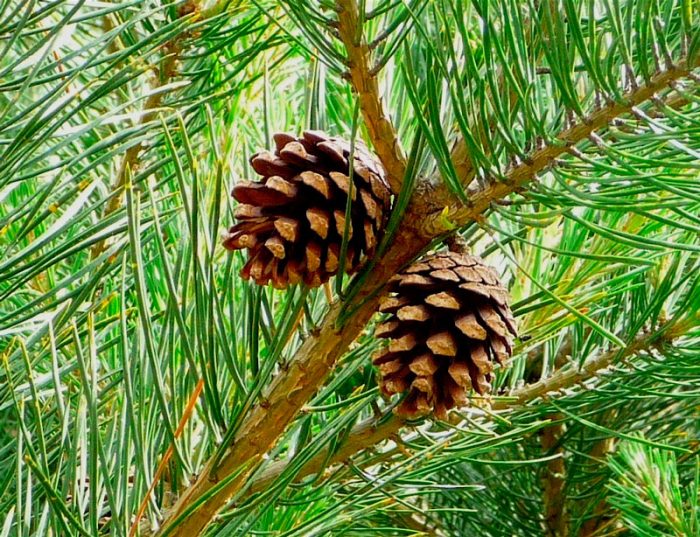
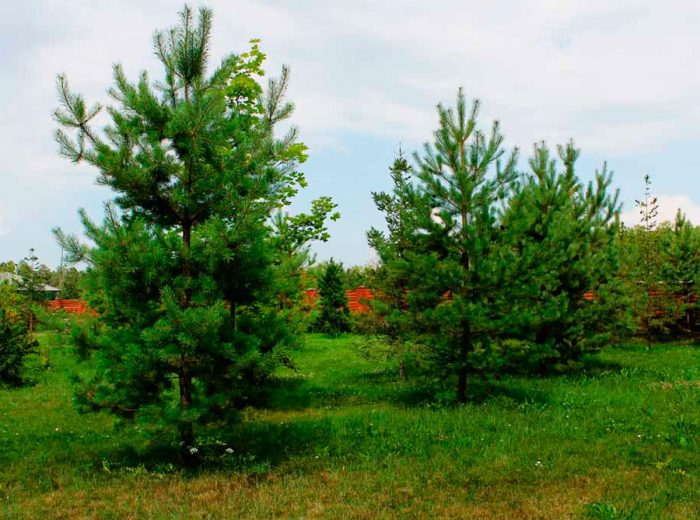

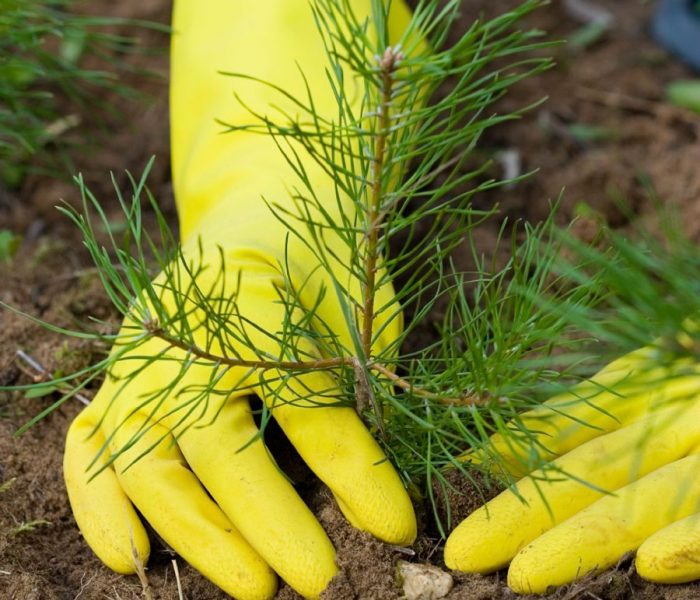
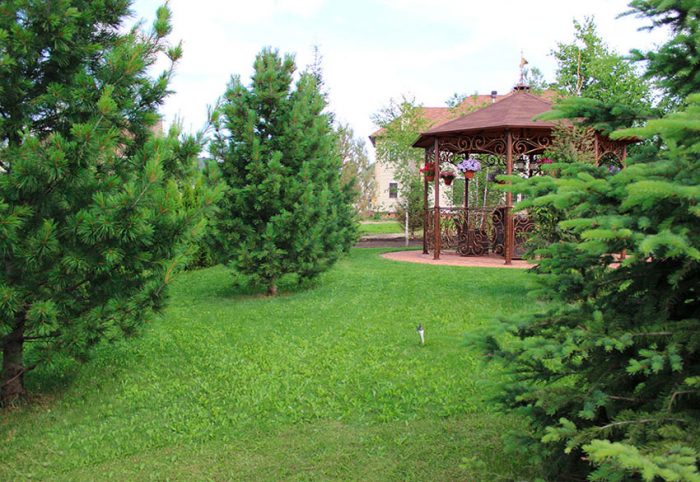
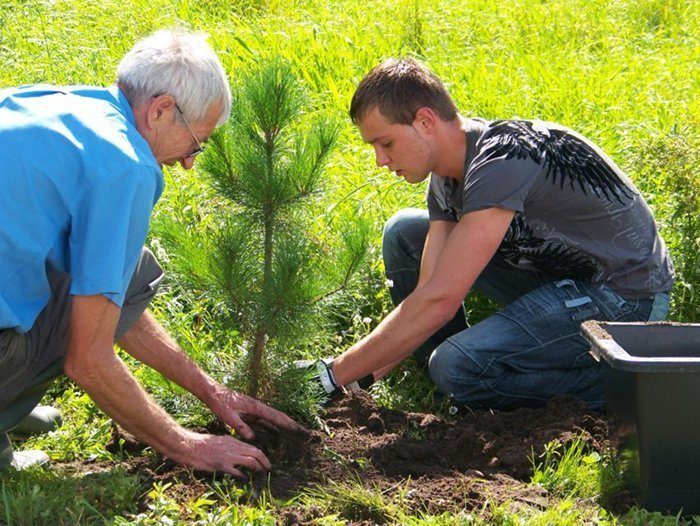

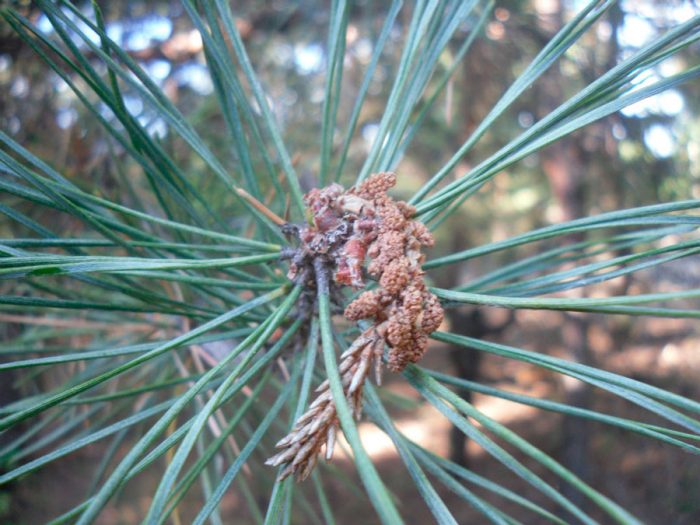

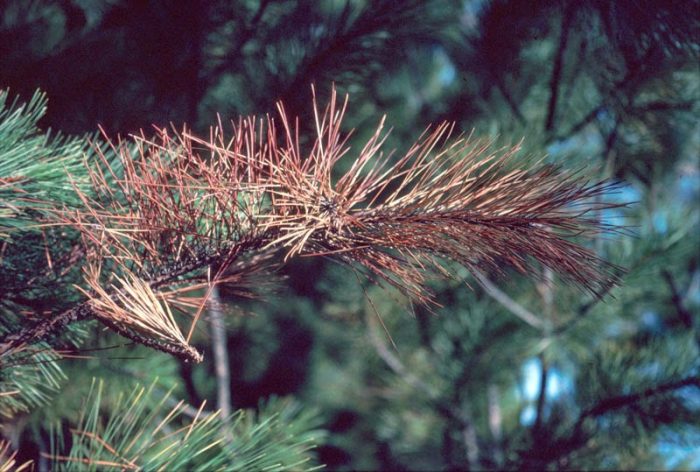
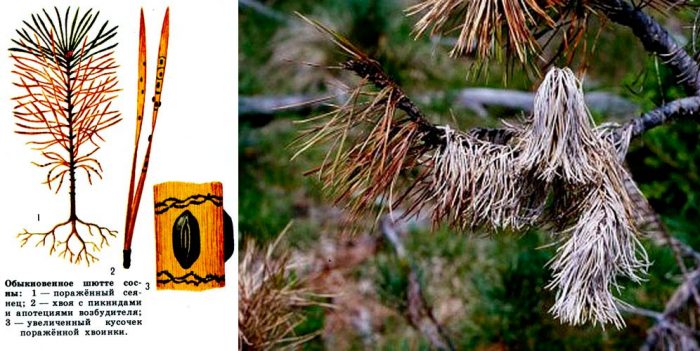

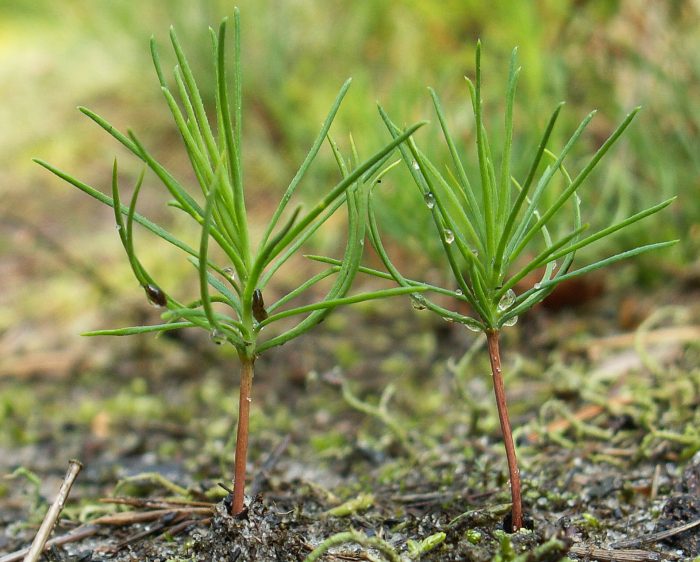

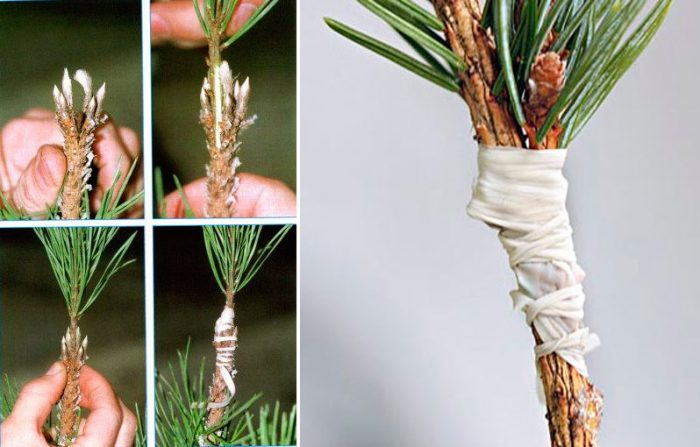
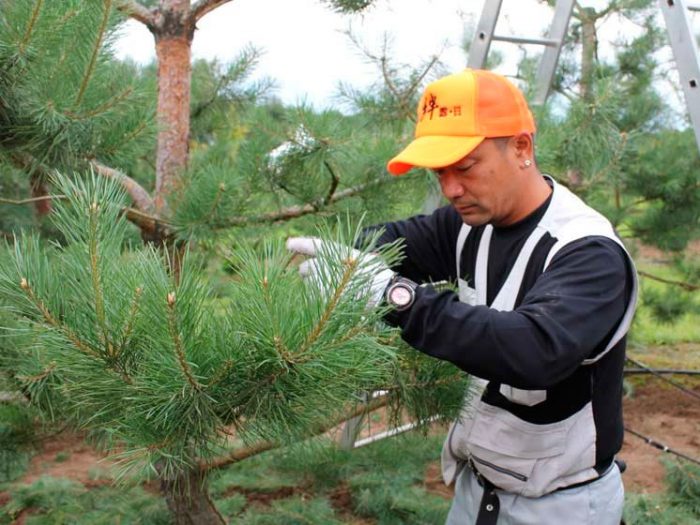
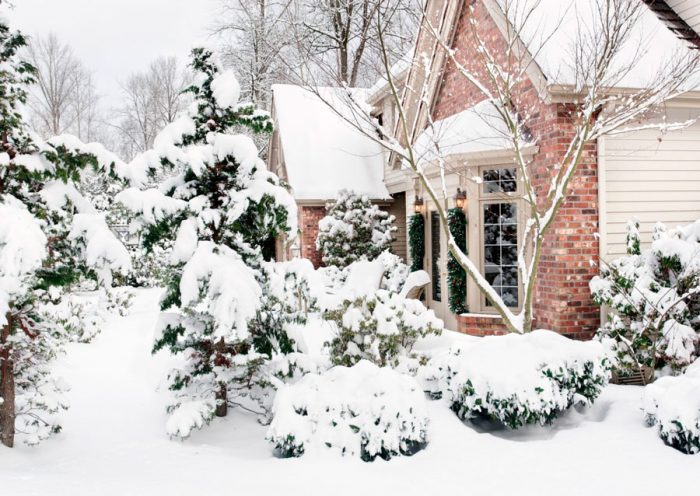
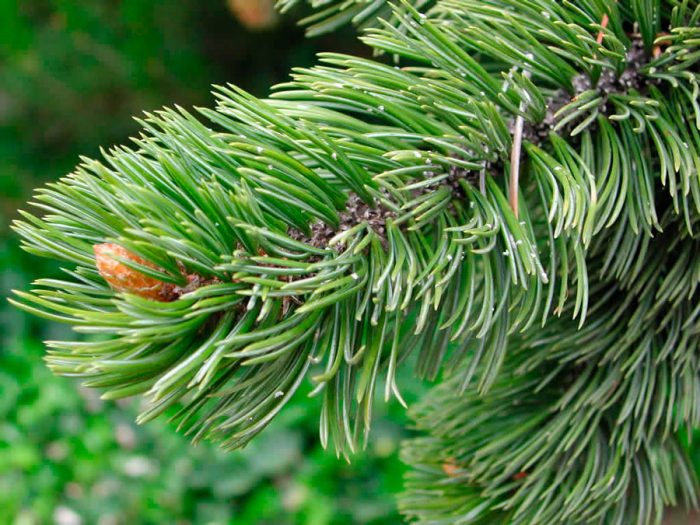
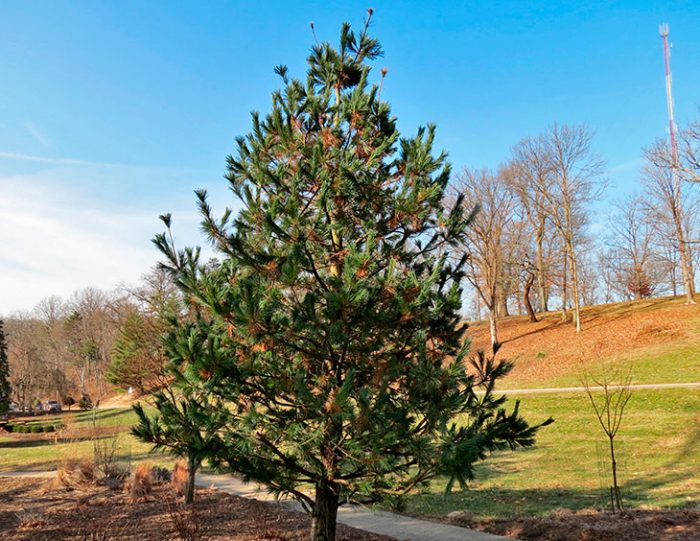
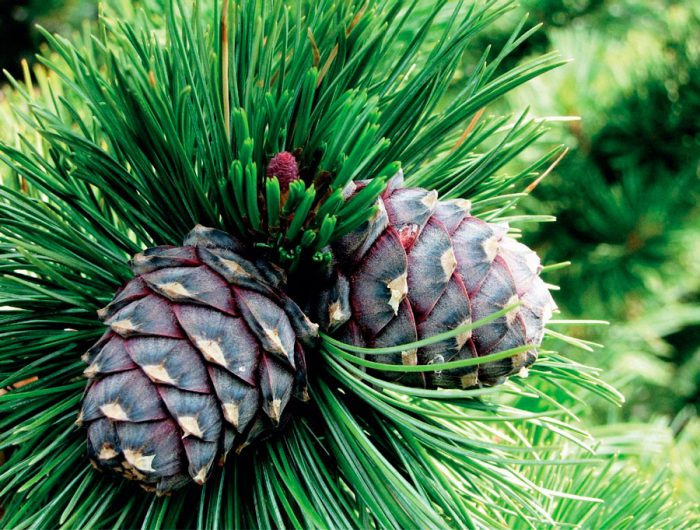
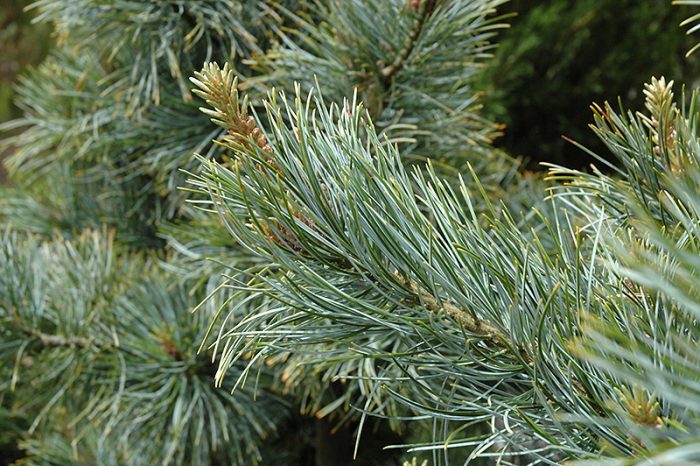

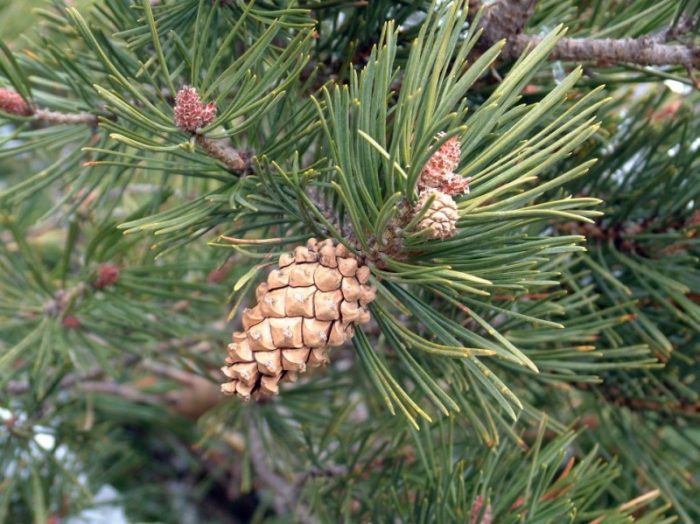



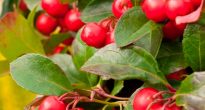

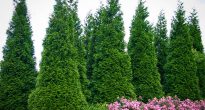




Hello!
I ask for advice regarding Scots pine near the house. The pine tree is 20-25 years old, the height is about 10 m. Landscape changes of the site are being carried out, there is a need to add soil 40-50 cm under the pine tree. Will this not lead to negative consequences for the tree? Thanks for the answer!